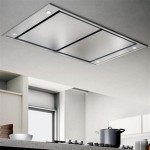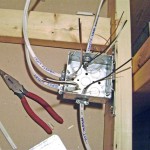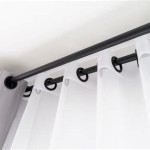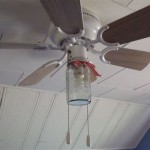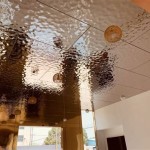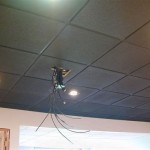How to Hang a Quilt From the Ceiling
Hanging a quilt from the ceiling presents a visually striking and space-saving method for displaying cherished textile art. This technique transforms a quilt into a focal point, adding texture, color, and a touch of artistic flair to any room. However, successfully executing this display requires careful planning, appropriate materials, and precise execution to ensure the quilt is both securely mounted and showcased in its best light.
Different approaches exist for hanging a quilt from the ceiling, each with its own advantages and disadvantages. The choice depends on factors such as the quilt's size and weight, the ceiling's construction (drywall, plaster, or wood), the desired aesthetic, and the level of permanence acceptable. Some methods prioritize minimal intrusion, while others offer enhanced stability for heavier or more delicate textiles. Regardless of the chosen method, prioritizing the quilt's preservation is paramount. The display system should never stress or damage the fabric.
Assessing the Quilt and Ceiling
Before embarking on any installation, a thorough assessment of both the quilt and the ceiling is essential. The quilt’s weight and dimensions will dictate the necessary hardware and support system. Lighter quilts can be supported by less robust anchors, while heavier quilts will require more substantial fixings to prevent sagging or detachment. Determining the quilt’s weight is a crucial first step; using a bathroom scale while holding the quilt provides a reasonable estimate.
Equally important is understanding the ceiling's construction. Drywall ceilings require specialized anchors designed to grip the material securely. These anchors, often referred to as drywall anchors, come in various forms, including toggle bolts, self-drilling anchors, and expansion anchors. Each type has a different weight capacity, so it's crucial to select anchors rated for the quilt's weight, with a safety margin for added security. Plaster ceilings, while often more durable than drywall, can be prone to cracking if not handled carefully. When installing anchors in plaster, pre-drilling a pilot hole is highly recommended to prevent damage. Wood ceilings offer the most straightforward installation. Screws can be driven directly into the wood, providing a strong and reliable hold.
Furthermore, identifying the location of ceiling joists is critical for maximizing support. Joists are the structural beams that run across the ceiling, providing significant weight-bearing capacity. Using a stud finder, locate the joists and mark their positions. If possible, anchoring the quilt's hanging hardware directly into the joists will provide the most secure and stable installation. When joists are not accessible at the desired hanging point, drywall anchors or other appropriate fasteners must be used.
Selecting the Appropriate Hanging Method and Hardware
Several methods exist for hanging quilts from the ceiling. Each approach offers a unique balance of aesthetics, ease of installation, and structural integrity. The choice depends on the specific requirements of the quilt and the desired visual effect.
One common method involves creating a hanging sleeve along the quilt’s top edge. This sleeve, typically made from a durable fabric matching the quilt's backing, provides a channel for a support rod. The rod, which can be made of wood, metal, or PVC pipe, is then suspended from the ceiling using chains, cables, or decorative ropes. This approach distributes the quilt's weight evenly along the rod, minimizing stress on the fabric and preventing sagging. The hanging sleeve should be carefully sewn to the quilt, ensuring it is strong enough to support the quilt's weight without tearing or distorting the fabric. Reinforcing the sleeve seams with extra stitching is highly recommended.
Another method involves using individual hooks or clips attached directly to the quilt. This approach is best suited for lighter quilts and requires careful placement of the hooks to distribute the weight evenly. Specialized quilt clips, designed to grip the fabric without causing damage, are available from various retailers. These clips are typically attached to the ceiling using hooks or screw eyes. Precise spacing of the clips is crucial to prevent the quilt from drooping or tearing. A guide can be created on paper to ensure even distribution of the clips along the quilt's top edge. This method offers a more minimalist aesthetic, as the supporting hardware is less visible than with the hanging sleeve and rod approach.
A third method, suitable for display in gallery or exhibition settings, involves the use of a custom-built hanging frame. This frame, typically made of lightweight wood or metal, provides a rigid support structure for the quilt. The quilt is attached to the frame using various techniques, such as stitching, Velcro strips, or specialized quilt clamps. The frame is then suspended from the ceiling using cables or chains. This method offers maximum support and protection for the quilt, as it prevents the fabric from sagging or creasing. However, it is also the most complex and expensive option, requiring custom design and fabrication.
Regardless of the chosen method, selecting high-quality hardware is essential for a secure and long-lasting installation. Ceiling hooks, chains, cables, and anchors should be rated for the quilt's weight, with a generous safety margin. Stainless steel hardware is recommended, as it is resistant to corrosion and can withstand the rigors of indoor environments. Ensure that all hardware is compatible with the ceiling material and is installed according to the manufacturer's instructions.
Executing the Installation
Once the hanging method and hardware have been selected, the installation process can begin. This step requires careful planning and precise execution to ensure the quilt is securely mounted and displayed to its full potential.
First, accurately measure and mark the desired hanging location on the ceiling. Use a level to ensure the marks are aligned horizontally and vertically. If using a stud finder to locate ceiling joists, mark their positions clearly. These marks will serve as guides for installing the ceiling anchors or hooks. Precise measurements are crucial for achieving a balanced and aesthetically pleasing display.
Next, install the ceiling anchors or hooks according to the manufacturer's instructions. If using drywall anchors, pre-drill pilot holes if necessary to prevent damage to the ceiling. Ensure the anchors are securely seated and can support the quilt's weight. If attaching directly to ceiling joists, use screws of appropriate length and gauge to penetrate the wood. Tighten the screws securely, but avoid over-tightening, which can strip the threads or damage the wood.
With the ceiling hardware in place, attach the quilt to the hanging system. If using a hanging sleeve and rod, slide the rod through the sleeve and attach the chains, cables, or ropes to the rod. Ensure the weight is evenly distributed along the rod to prevent sagging. If using individual hooks or clips, carefully attach them to the quilt, ensuring they are evenly spaced and securely fastened. If using a hanging frame, attach the quilt to the frame according to the chosen method, ensuring the fabric is taut and wrinkle-free.
Finally, carefully lift the quilt and attach the hanging system to the ceiling hooks or anchors. Double-check that all connections are secure and the quilt is hanging evenly. Make any necessary adjustments to the chains, cables, or ropes to achieve the desired height and angle. Step back and visually inspect the installation from various angles to ensure the quilt is displayed to its best advantage. If any sagging or unevenness is detected, make the appropriate adjustments to the hanging hardware or the quilt's attachment points.
After hanging the quilt, regularly inspect the hardware and the quilt for any signs of wear or damage. Check the ceiling anchors or hooks for looseness and the quilt for any tears or stress marks. Promptly address any issues to prevent further damage to the quilt or the ceiling. Consider rotating the quilt periodically to minimize exposure to light and dust, which can cause fading and deterioration. By following these guidelines, a cherished quilt can be transformed into a stunning ceiling display, enhancing the beauty and character of any room.

Back To Ceiling Quilt Hanging System

Pulley Systems Using No See Ums Invisible Bars Quilt Hanging Solutions By The Hang Ups Company From Ashland Oregon

Hang Quilts In Museums Galleries Libraries Churches S And Studios Quilt Hanging Solutions By The Ups Company From Ashland Oregon

Pulley Systems Using No See Ums Invisible Bars Quilt Hanging Solutions By The Hang Ups Company From Ashland Oregon

How To Hang Quilts Without A Hanging Sleeve

Hang Quilts In Museums Galleries Libraries Churches S And Studios Quilt Hanging Solutions By The Ups Company From Ashland Oregon

Quilt Kisses Diffe Ways To Hang Quilts

The Inside Stori By Mary Scary Process Hanging Quilts On Stairway Walls

Quilt Wall Hanging Retiring An Heirloom While Adding Color And A Shelf

Quilting Frames That Rolled Down From The Ceiling My Mamaw Spent Most Of Her Time Hanging Quilts Quilt Frame Plans
Related Posts

